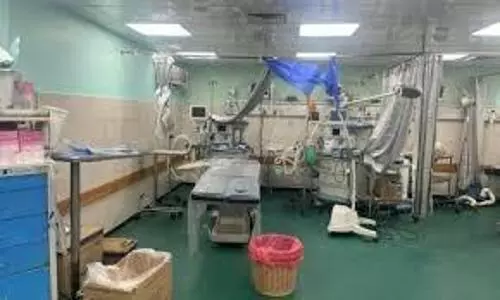
Search begins to provide healthy diet for space dwellers
text_fieldsWashington: Will astronauts be able to grow enough food on Mars to maintain a healthy diet? How about growing food on Earth under extreme conditions?
These are the questions scientists are trying to answer by observing plant growth in microgravity on the International Space Station (ISS).
When a crew leaves the Earth's orbit to go into space, plants can recycle the astronauts' exhaled carbon dioxide and excreted water in addition to providing food, observed plant biologists working for "Petri Plants" - an investigation exploring the fundamental genetic mechanisms plants use to adapt to a microgravity environment.
"Plants give us insight into the fundamental nature of higher organisms, so learning about the metabolism of plants in response to a unique and challenging environment also tells us about ourselves," said Anna-Lisa Paul, the principal investigator with the University of Florida.
The researchers designed Characterizing Arabidopsis Root Attractions (CARA) method to investigate the impact of light on root movements in microgravity and further explore the genetic responses of these plants.
The plant under investigation is Arabidopsis thaliana commonly referred to as Thale Cress.
The plant has adapted well in spaceflight environments on both the shuttle and space station.
For the CARA investigation, the arabidopsis seed was genetically modified with a green-fluorescence protein marker called GFP.
This allowed scientists to see how the plant responded to microgravity.
The plants were exposed to the diffused light present on the station by attaching the petri dishes, which included the seeds and a growing medium, directly on an inner wall of the space station.
This exposed the plants to the ambient lighting of the space station module in which they were housed.
"We were intrigued by the numerous light-sensing genes that are expressed specifically in roots in orbit, and the CARA experiments explored the role of these genes in orientation and cellular remodeling," Paul noted.
In these experiments, researchers found that light had a very profound impact on not only the direction of root growth but also the morphology or patterns of root growth.
The CARA investigation has been sponsored by the Center for the Advancement of Science in Space (CASIS) and supported by NASA.























